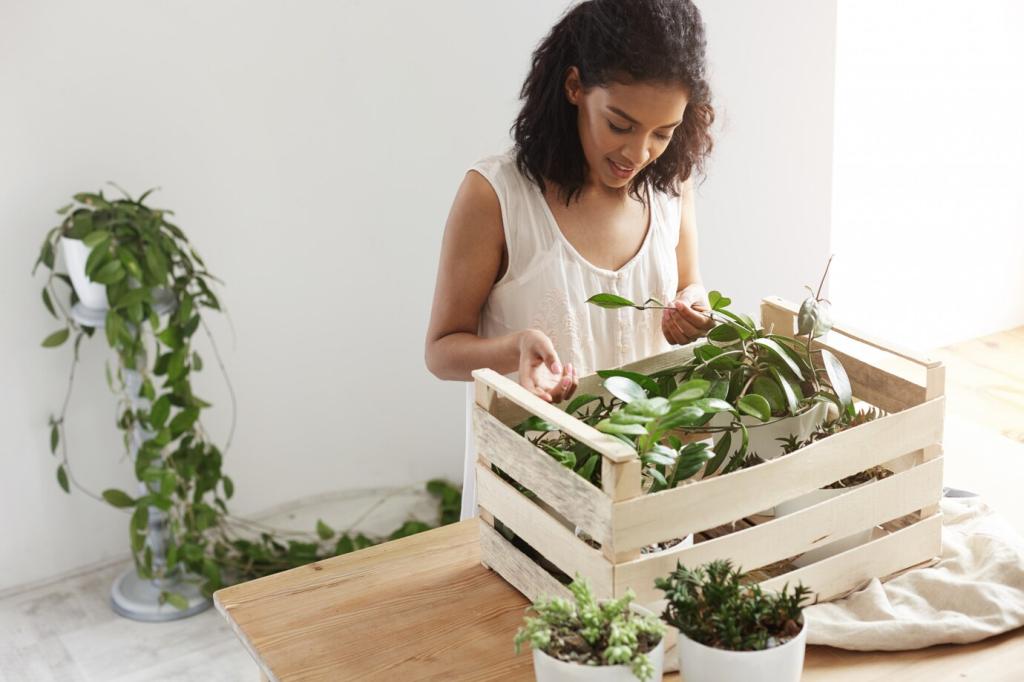Water-Saving Tips for Eco-Friendly Living
Water is one of our planet’s most precious resources, and as concerns about environmental sustainability grow, conserving water has become a cornerstone of eco-friendly living. Every drop saved supports a healthy ecosystem and reduces the strain on our communities’ infrastructure. Whether you are motivated by environmental stewardship or economic savings, adopting practical water-saving habits is an impactful way to make a difference. This guide provides actionable tips and insights designed to help you minimize water use at home and in your daily routine while supporting a lifestyle that respects and protects our natural world.

Shorter Showers
Taking shorter showers is a straightforward and effective way to conserve water in your home. Traditional showers can use up to 10 liters of water per minute, meaning that even a few minutes saved can result in dozens of liters conserved each day. To turn this into a habit, consider setting a timer or playing a favorite song that’s about five minutes long, aiming to finish before the music ends. This simple method helps make showering efficiently engaging rather than tedious. By coming mindful of shower lengths and avoiding unnecessary time under running water, you not only contribute to water conservation efforts but may also inspire the other members of your household to follow suit, amplifying the positive impact.
Fixing Leaks Promptly
A dripping faucet or a leaking toilet can waste thousands of liters yearly without you even realizing it. Unattended leaks not only increase your water bill but also represent a constant drain on your household’s resources. Inspect faucets, showerheads, and pipes regularly for any signs of leaks and address issues as soon as they arise. Simple fixes, such as replacing washers or tightening fittings, often require minimal tools and time but provide considerable water savings. If you notice your toilet running longer than usual or hearing intermittent sounds from bathroom fixtures, it’s crucial to investigate further. Regular maintenance and prompt repairs ensure your bathroom operates efficiently for both ecological and economic benefit.
Turning Off the Tap
A substantial amount of water is unnecessarily wasted while performing routine tasks like brushing teeth or shaving. Leaving the tap running during these activities can pour hundreds of liters down the drain each month. Instead, practice turning off the faucet while brushing or shaving and only use water when rinsing. This conscious act may seem minor but collectively results in significant water savings over time. If you find it challenging to remember at first, placing a small sign or sticker near your bathroom sink can serve as a gentle reminder. Through consistent application of this habit, you can effortlessly contribute to reducing your household’s overall water consumption.
Water-Wise Kitchen Practices
Using Appliances Efficiently
Modern dishwashers and washing machines are designed to be highly water-efficient, but their benefits are realized only when used correctly. It’s important to run full loads rather than half loads, ensuring that each use maximizes the machine’s capacity and minimizes wasted water. Selecting the eco-mode, if available, can further reduce water consumption. Additionally, many new appliances have customizable settings suited for lightly or heavily soiled dishes or laundry, letting you choose the right amount of water for each task. By being strategic about when and how you use your appliances, you dramatically lessen water waste and promote responsible consumption in your kitchen.
Mindful Food Preparation
Food preparation often involves significant water usage, particularly during cleaning and rinsing stages. Instead of letting water run continuously while washing vegetables or fruits, fill a basin or bowl with water and use it for cleaning purposes. This allows you to reuse the same water for multiple items, cutting down on overall consumption. Similarly, when defrosting food, avoid running tap water and opt for refrigerator thawing in advance. These mindful adjustments do not compromise cleanliness or safety and are simple ways to infuse sustainability into your cooking routine, ensuring that water usage is both intentional and minimized.
Smart Dishwashing Techniques
Hand washing dishes can use significantly more water than a dishwasher if not done efficiently. To save water, avoid washing under a continuous flow; instead, fill one side of the sink with soapy water for washing and the other for rinsing. Scrape leftover food into the compost bin before washing, so there’s no need for excessive water rinsing prior to cleaning. When possible, let dishes soak to loosen tough residues, which makes cleaning more efficient. Implementing these techniques reduces water waste and can make the chore less daunting, turning dishwashing into a task that aligns with your commitment to sustainability.
Outdoor Water Conservation
Drought-Resistant Landscaping
Choosing native and drought-tolerant plants for your garden is one of the most effective strategies to cut outdoor water use. These plants are naturally adapted to local climate conditions and typically require far less irrigation than non-native species. Once established, native landscapes are hardier in the face of droughts and unpredictable weather. By working with nature’s rhythms and selecting plants that thrive without excessive watering, you create an outdoor environment that benefits local wildlife, requires minimal input, and conserves water all season long.
Smart Irrigation Methods
Watering lawns and gardens efficiently can result in massive water savings. Invest in a drip irrigation system or soaker hoses, which deliver water directly to plant roots, minimizing evaporation and runoff compared to traditional sprinklers. Watering early in the morning or late in the evening reduces water loss due to heat and wind, allowing your plants to absorb moisture more effectively. Avoid overwatering by using soil moisture sensors or simply checking soil before watering. With these smart methods, you maintain the health and vitality of your garden while significantly reducing unnecessary water use.
Rainwater Harvesting
Rainwater harvesting is a time-tested method to make the most of nature’s free resource. By installing barrels or collection systems beneath downspouts, you can capture and store rainwater for later use in your garden or for other outdoor needs. Using harvested rainwater not only helps conserve potable water but also provides a gentle, mineral-rich supply for plants. Properly maintained, these systems are inexpensive, easy to set up, and require little ongoing attention, providing a consistent way to supplement your outdoor watering practices in an eco-friendly fashion.
